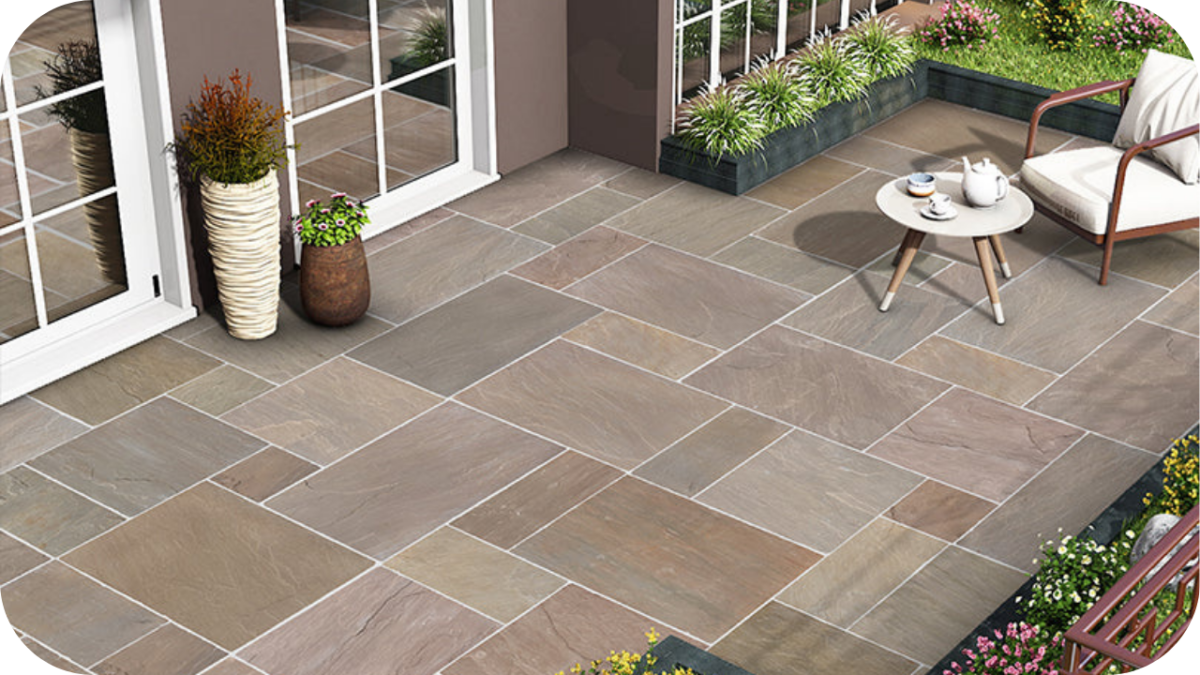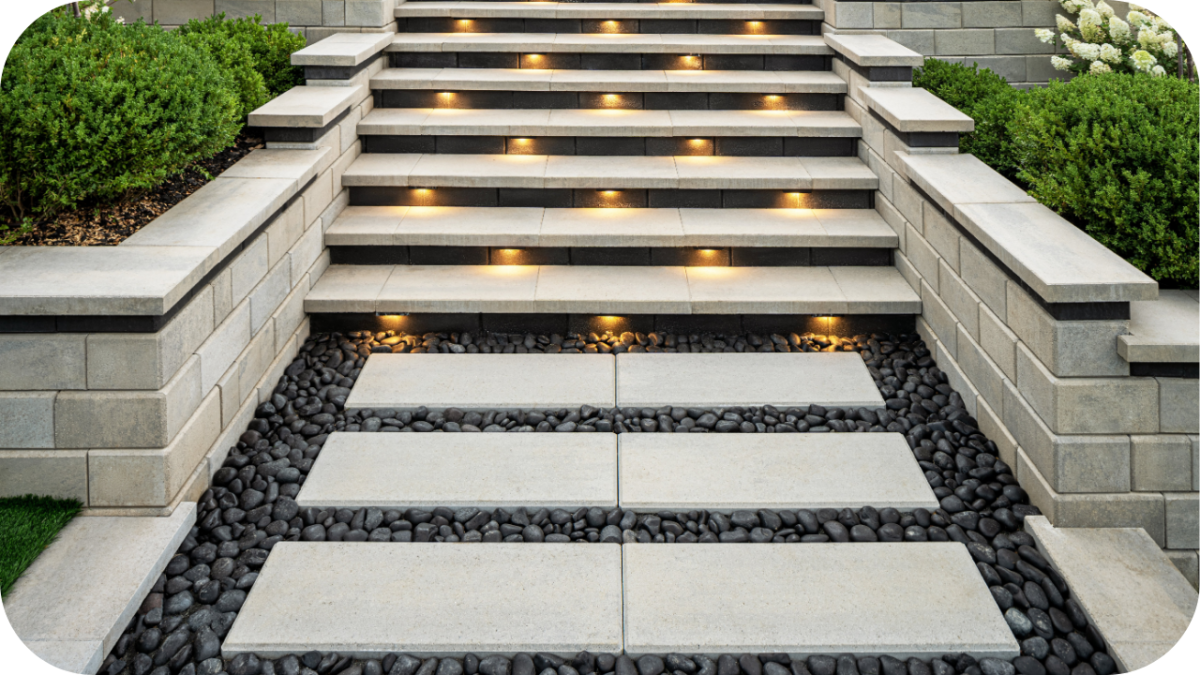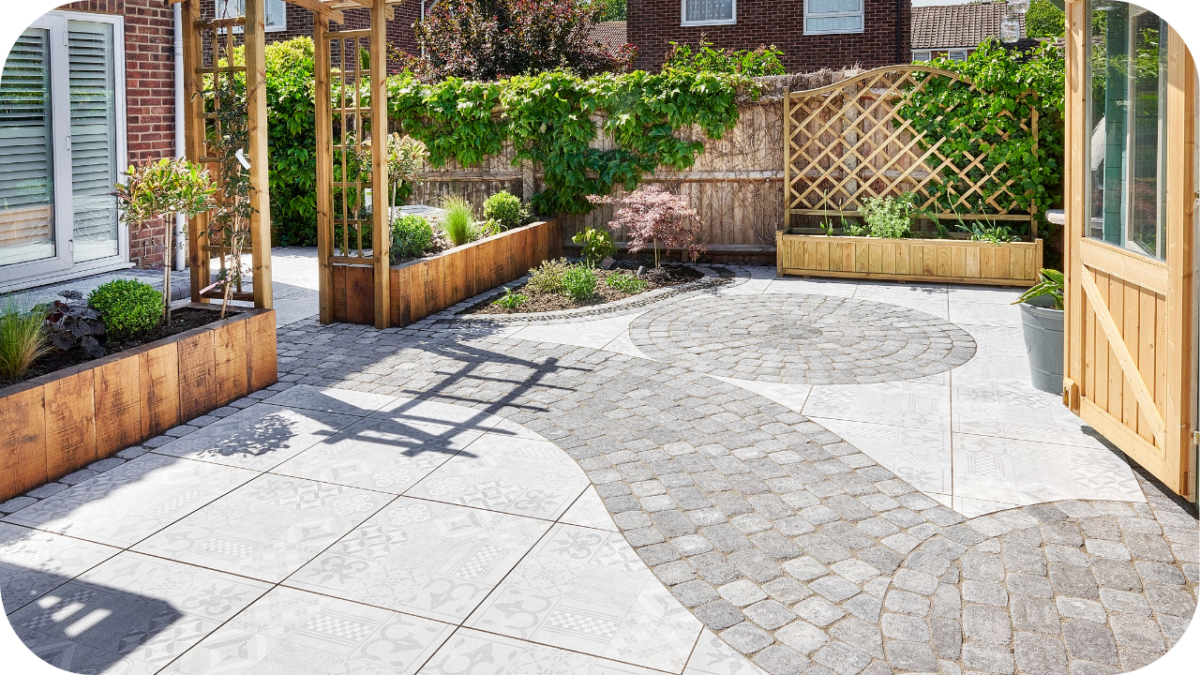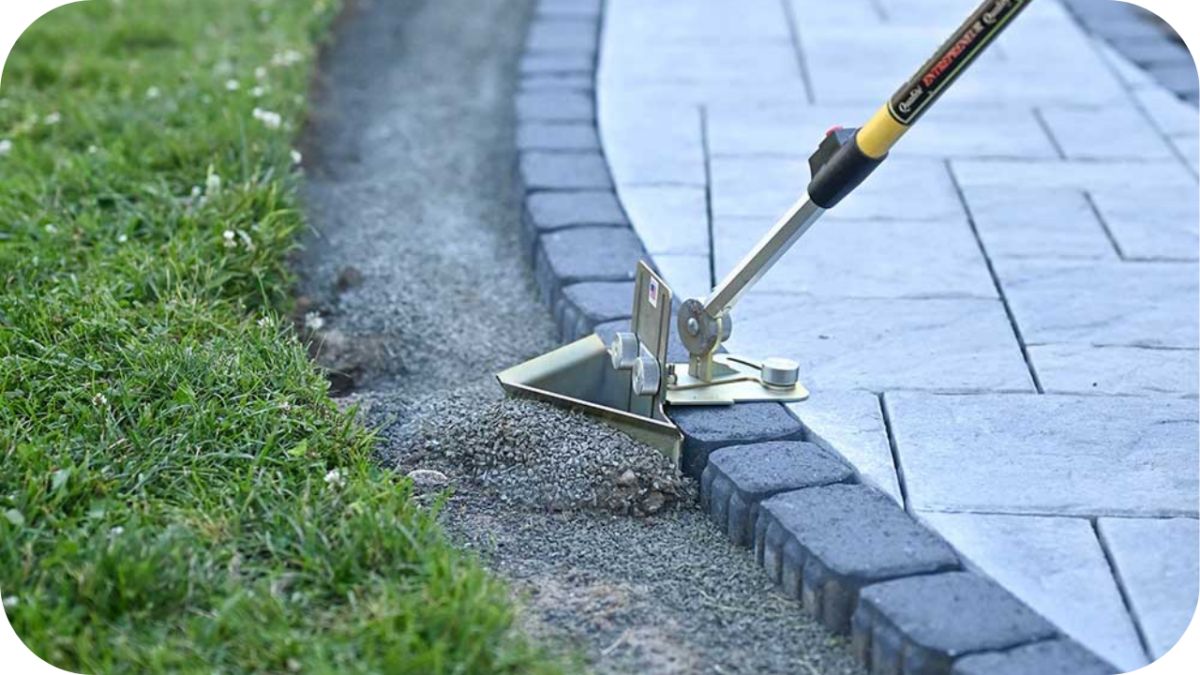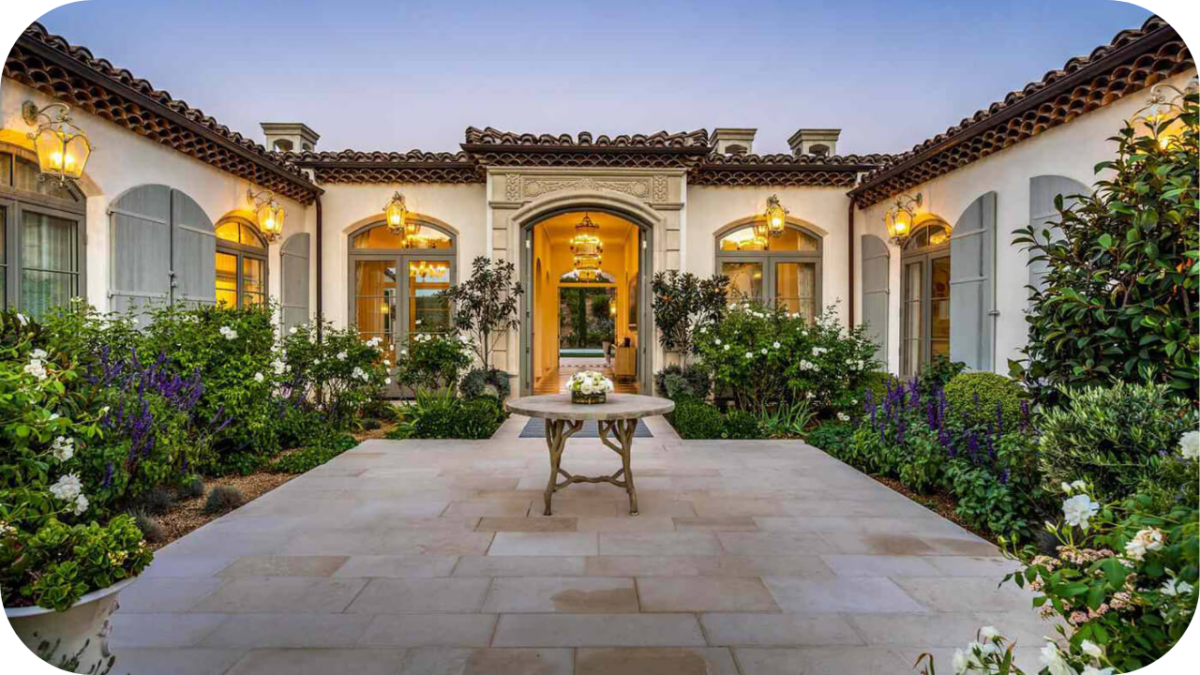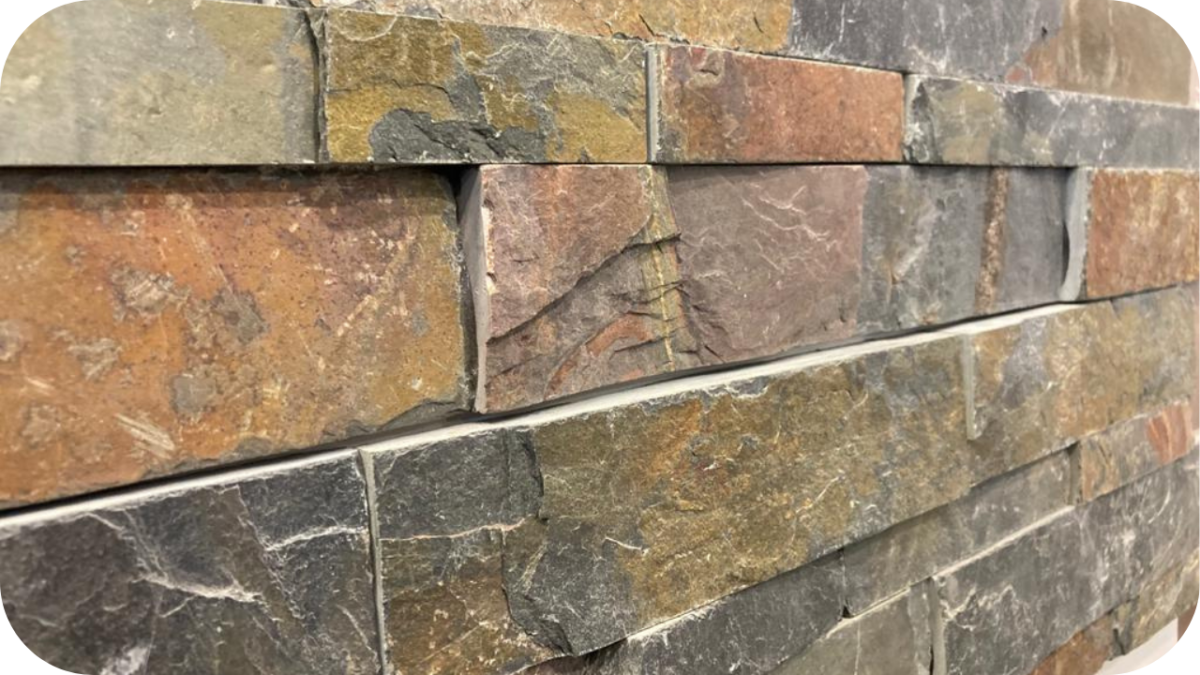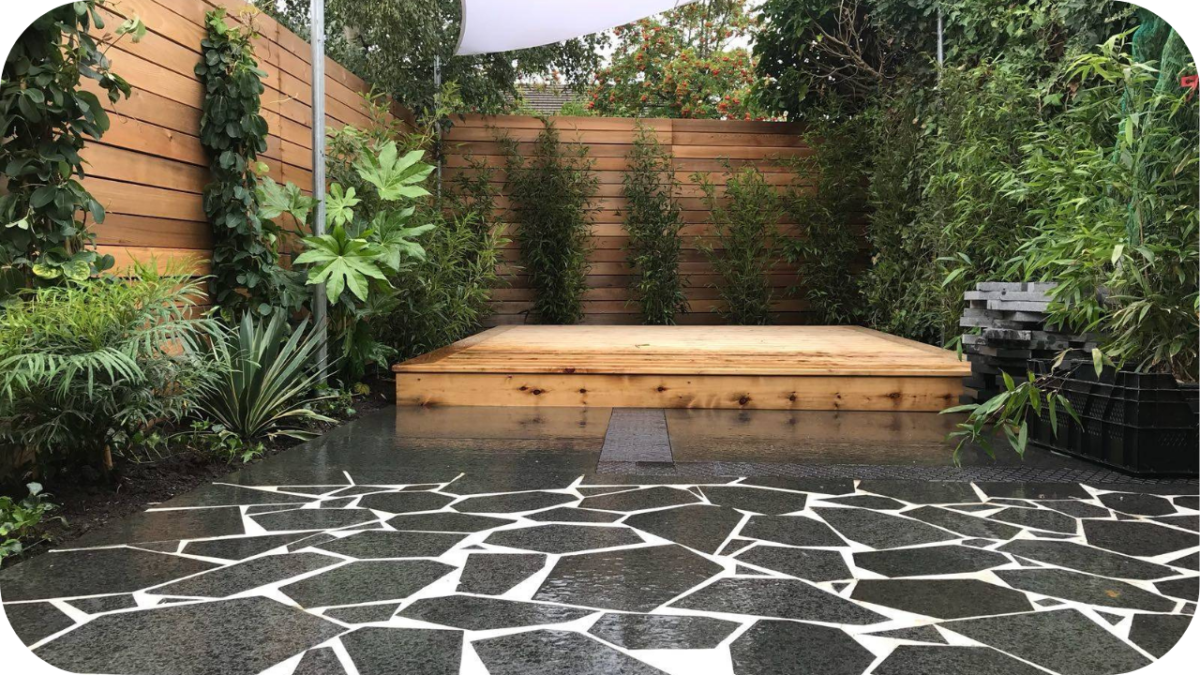Stone Paving Inspiration for Small Outdoor Areas
Small outdoor spaces present both challenges and opportunities for creative design. With the right stone paving, even the most compact areas can be transformed into stylish, functional retreats. Natural stone offers a versatile solution, enhancing outdoor spaces with minimal effort.
This article will highlight the best paving styles, key considerations, and layout ideas to help you make the most of your small space.
Why Stone Paving is Ideal for Small Outdoor Spaces
Stone paving is the perfect solution for small outdoor areas, offering both aesthetic appeal and practicality. It enhances the visual appeal of confined spaces without overwhelming them, allowing for a clean, seamless look.
Natural stone materials, such as limestone, granite, and bluestone, add texture and warmth, helping transform even the smallest spaces into welcoming environments. Additionally, stone paving is highly durable and low-maintenance, making it ideal for high-traffic areas like patios and courtyards.
Its versatility allows it to complement a variety of design styles, from minimalist to rustic. By using stone, small outdoor spaces feel more organic and open, providing a sense of flow between the indoors and outdoors.
Key Considerations Before Choosing Stone for Small Spaces
Selecting the right stone for small spaces is crucial for both functionality and aesthetics. Here are key factors to consider for a perfect fit in your outdoor area.
1. Assess Foot Traffic and Intended Use
Consider the intended use of the space, whether it’s for seating, dining, or gardening. High-traffic areas require durable, slip-resistant stones, while decorative areas can focus more on appearance and texture.
2. Choose the Right Scale and Size of Pavers
Select appropriately sized pavers to avoid overcrowding. Smaller, well-placed stones create the illusion of more space, while larger pavers provide a sleek, modern look. The right scale prevents a cluttered, cramped feel.
3. Factor in Drainage, Shade, and Sunlight Exposure
Ensure proper drainage by selecting permeable stone for areas prone to water pooling. Consider how sunlight and shade affect the stone’s appearance over time, as some stones may fade or become slippery in wet conditions.
4. Consider Long-Term Maintenance Needs
Choose stones that are easy to clean and maintain in small spaces. Pavers with low porosity and durable finishes require less upkeep, ensuring your outdoor area remains beautiful with minimal effort.
5. Complement the Overall Design Aesthetic
Select stones that align with the overall design and style of your home. Whether you want a rustic, modern, or coastal vibe, the right stone enhances the aesthetic and ties your space together.
Best Stone Types for Compact Paving Projects
Choosing the right stone type is essential for maximising style and durability in small outdoor spaces. Here are the top paving options with their ideal finishes for various designs.
- Granite: Charcoal Granite with a flamed finish is perfect for modern driveways and pathways. Its durability and sleek, polished surface make it ideal for high-traffic areas.
- Limestone: Stamford limestone with a smooth finish creates a contemporary look for patios, while Selene limestone offers a bright finish that is ideal for light, open spaces.
- Travertine: Ivory Travertine with a natural finish creates an inviting atmosphere for patios, while Silver Travertine suits areas requiring a classic, time-honoured look and feel.
- Quartzite: Andorra Quartzite with a natural split finish adds texture and refinement to modern spaces, while Maya Blue Quartzite offers striking hues for focal areas and unique design touches.
- Marble: Ocean Grey Marble with a honed finish adds luxury to outdoor patios, while Luna Grey Marble with a smooth finish creates a sleek, modern appearance for small spaces.
- Bluestone: Flamed Bluestone with a textured finish is ideal for high-traffic areas, while Honed Bluestone provides a smooth, matte surface, perfect for contemporary designs and sleek outdoor spaces.
Top Stone Paving Layouts for Small Outdoor Areas
The right layout can make a small outdoor area feel more spacious and cohesive. Here are the top paving layouts that enhance compact spaces, offering both functionality and style.
1. Herringbone Pattern
The herringbone pattern creates a dynamic, space-enhancing look. It works particularly well in narrow or small areas, adding a sense of movement and rhythm, perfect for compact patios and pathways.
2. Modular Grids
Modular grids create structured, balanced layouts that help maintain harmony in small spaces. This simple yet effective pattern suits contemporary designs, offering a neat, organised aesthetic that complements minimalist outdoor areas.
3. Staggered Rectangular Paving
Staggered rectangular paving elongates the visual space, making areas feel more expansive. It suits modern and rustic designs, creating a flow that complements traditional and contemporary backdrops while maintaining practicality.
4. Crazy Paving
Crazy paving, with its irregular stone pieces, softens harsh lines and maximises creativity. It works well in organic, free-flowing designs, creating an inviting, charming look for courtyards or garden paths in smaller outdoor spaces.
5. Linear Layout
A linear layout creates clean, parallel lines that emphasise order and simplicity. Ideal for small outdoor spaces, this pattern works well with sleek, modern designs, making the area feel longer and more structured.
How to Make a Small Area Feel Bigger with Stone
The right stone choices and layout techniques can visually expand a small outdoor space. Here are effective ways to use stone paving to create the illusion of more space in compact areas.
1. Use Light-Coloured Stone to Reflect Natural Light
Light-coloured stones, such as Ivory Travertine or Selene Limestone, help reflect natural light, making small spaces feel brighter and more open. Their soft hues create an airy atmosphere, enhancing the overall sense of space.
2. Incorporate Minimal Grout Lines and Large Paver Formats
Minimising grout lines and opting for large pavers reduces visual interruptions, creating a seamless look. Large-format stones like Granite or Bluestone make spaces feel more expansive, contributing to a sleek, modern aesthetic in small areas.
3. Create Diagonal or Directional Patterns to Draw the Eye
Diagonal or directional patterns, like a herringbone layout, guide the eye across the space, elongating it. This technique enhances the feeling of depth and makes even the smallest areas feel wider and more dynamic.
4. Use Large Stones to Minimise Joints
Larger stone pavers reduce the number of joints, making the area feel more spacious and less cluttered. Stones like Granite or Bluestone provide a sleek look, while fewer grout lines create an open, airy feel.
5. Incorporate Vertical Elements to Add Depth
Adding vertical elements like stone walls, planters, or trellises can create a sense of height and depth. These features draw the eye upwards, making the space feel larger while maintaining a cohesive, integrated design.
Stone Paving Ideas for Specific Small Spaces
Maximise the potential of your small outdoor areas with these stone paving ideas, tailored for courtyards, pathways, balconies, and more. Here are creative ways to enhance every compact space.
- Courtyards: Combine stone with vertical gardens and built-in seating to maximise space. Light-toned stones like Selene Limestone brighten the area, creating a welcoming retreat without overwhelming the space.
- Side Paths and Narrow Passages: Stepping stones or staggered tiles with gravel insets are ideal for narrow paths. This layout adds visual interest while maintaining a sense of space in tight areas.
- Apartment Balconies: Consider portable stone tiles or lightweight modular panels for apartment balconies. These options are easy to install, offering flexibility while maintaining a high-end aesthetic in limited spaces.
- Small Patios and Alfresco Areas: Extend the paving into vertical walls using Granite or Travertine to create cohesion. This technique enhances the sense of space and ties the entire area together.
- Garden Borders and Edging: Use smaller stones like Bluestone Cobbles or Porphyry to create defined borders for garden beds. This framing adds structure and visual appeal to small garden spaces.
How to Pair Stone Paving with Furniture and Décor
Pairing the right furniture and décor with stone paving enhances your outdoor space. Here are key tips for a cohesive, stylish look when integrating stone with outdoor furnishings.
1. Choose Minimalist, Space-Saving Furniture
Opt for sleek, modern furniture in neutral colours that complement the clean lines of your stone paving. Keep designs simple to avoid overcrowding and maintain a minimalist aesthetic.
2. Match Tones and Textures for a Cohesive Finish
Match the tones and textures of your furniture with the stone paving. For Bluestone or Granite, use metal or wooden furniture with simple designs to ensure a balanced, harmonious feel.
3. Use Stone Plinths, Planters, or Water Features
Add dimension with stone plinths, planters, or water features. These elements complement the stone paving, enhancing its presence while providing functional and decorative benefits.
4. Incorporate Textured Fabrics for Contrast
Balance smooth stone with textured fabrics in cushions, throws, and rugs. Use natural materials like linen or wool to soften the hard surfaces and add warmth to the space.
5. Add Lighting to Highlight Key Features
Place lighting strategically around the paving to highlight features like pathways or seating. Use soft lighting to enhance the stone’s beauty and create a welcoming atmosphere.
Maintenance Tips for Small Stone-Paved Areas
Maintaining your stone-paved areas is essential for keeping them looking great. Here are some tips to ensure your small outdoor spaces stay functional and visually appealing for years.
- Sweep and Rinse Regularly: Keep your stone-paved areas free from debris by sweeping regularly. Rinse with water to remove dirt and prevent buildup, ensuring the paving stays neat and clean.
- Seal the Stone for Protection: Apply a high-quality sealant to protect your stone paving from stains, dirt, and weathering. Reapply the sealant periodically to maintain the stone’s appearance and durability.
- Clean Spills Immediately: Wipe up spills like oils, food, and liquids as soon as they happen to prevent staining or damage to the stone surface. Use a soft cloth to blot, not scrub.
- Check for Cracks and Shifting Stones: Inspect your paving regularly for cracks or shifting stones. Fill gaps with the appropriate grout or repair materials to prevent further damage.
- Remove Weeds and Moss Promptly: Prevent weeds and moss from growing between stones by using a weed killer or manually removing them. This will maintain a neat, tidy appearance and prevent stone movement.
Conclusion
Small outdoor spaces can have a big impact with the right stone paving. By selecting the perfect stone, layout, and finishes, you can create a stylish, functional retreat.
For expert advice and premium stone solutions, contact Splendour in Stone today to enhance your small space with beautiful, long-lasting paving.

